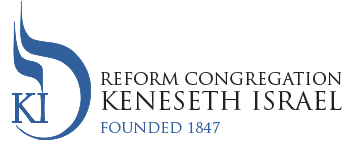The Parashah of T’tzaveh is directed at both a settled and evolving community of Jews. The sidrah contains very detailed instructions presented by G-d to be transmitted by Moses to the Jewish people. There are several passages in this portion that are meaningful to our religious lives and patterns of ritual conduct to this present day.
At the beginning of the portion, Moses is still alone on top of Mount Sinai. G-d Almighty gives him very specific details about constructing the Tabernacle, the portable sanctuary that the Israelites were to carry with them on their forty-year march through the desert.
Next, G-d instructs Moses: “You shall further instruct the Israelites to bring you clear oil of beaten olives for lighting, for kindling lamps regularly/L’ha-alot Neir Tamid” (27:20). This verse is honored in every Synagogue throughout the world to this day! The Neir Tamid/Eternal Light is placed in the front of all sanctuaries above the Aron Kodesh/Holy Ark.
Moses is told by G-d Almighty to bring forth his older brother, Aaron and his four sons, Nadab, Abihu, Eleazar, and Ithamar, to serve as the first Kohanim/Priests. Aaron is designated as the very first Kohen Gadol/High Priest, and it is his responsibility to administer the sacrificial services in the Tabernacle. The role of the High Priest becomes the major figure for Jewish religious practice for over 1200 years, until the destruction of the Second Temple by the Romans in 70 CE. To this day, descendants of the Priestly family are called Kohanim. Anyone you know with the last name of Cohen is from the lineage of Aaron and his sons.
We learn in Chapter 28 about the vestments to be worn by Aaron the High Priest. Very specific instructions are presented for the fabrication of the many elements of Aaron’s outfit that he must wear as he performs the sacrifices. G-d commands Moses: “Make sacral vestments for your brother Aaron, for dignity and adornment… These are the vestments they are to make: a breastplate, an ephod, a robe, a fringed tunic, a headdress, and a sash (28:2-4). The specific materials needed for fabrication are listed in detail! The breastplate, Choshen, is to be decorated with 12 precious stones and the names of the 12 tribes of Israel. All the priests are to wear the me’il—a cloak of blue wool, with gold bells and decorative pomegranates on its hem.
The portion concludes with the description of the special ceremony of ordination used to elevate Aaron and his four sons to their sacred roles as priests of the Israelite nation.
To this day, elements of these vestments are found in Synagogues all over the world! The special garments and paraphernalia worn by the High Priest have been re-located! When I was a young Hazzan at the Park Avenue Synagogue in New York City, each clergyperson: senior Rabbi, Senior Hazzan, and Hazzan Sheni/Second Hazzan (my title) came to the robing room on Shabbat morning to dress in his vestments. Each of us wore a black robe on Shabbat and Holidays, and white on the High Holidays. We also wore large black or white six pointed caps, called Kovah. Every Cantor/Hazzan wore the Kovah when he officiated at services. The Kovah is directly descended from the large turban worn by the High Priest 3000 years ago!
Instead of adorning the High Priest with the ancient accouterments, we place them instead on the Torah Scrolls in the ark. The sash is used to tie the Torah Scroll after it is read. The breastplate hangs from the wooden poles of the Torah. Rimonim, decorative pomegranates festooned with small bells, are placed on the top of the wooden poles. Just as the small bells jingled when the High Priest walked by in the Temple, so do the bells on the Torah Scrolls in every Synagogue ring today as the Torah scroll is paraded through the congregation. The crown of the High Priest has become the silver Keter Torah placed on top of the Torah Scroll.
All clerical vestments, regardless of denomination, are descended from the attire of the High Priest and his family described in this week’s Torah portion, including the vestments of Catholic and Protestant clerics.
At KI, Rabbi Sussman and Cantor Levy wear both black and white robes when officiating at our Shabbat, Festival, and High Holiday services. Our virtuoso organist, Andrew Senn, in his role as Director of Music, at First Presbyterian Church in Philadelphia, wears cassock and surplice during services.
The Torah text teaches us that clerical vestments are to bring dignity and elegance to religious practice. Our KI congregants understand that our attire should reflect the beauty and sanctity of our services. What we wear should reflect the holiness of the experience.
Ellen, our children, and our grandchildren, join me in wishing you Shabbat Shalom U’m’vorach.
Hazzan David F. Tilman
